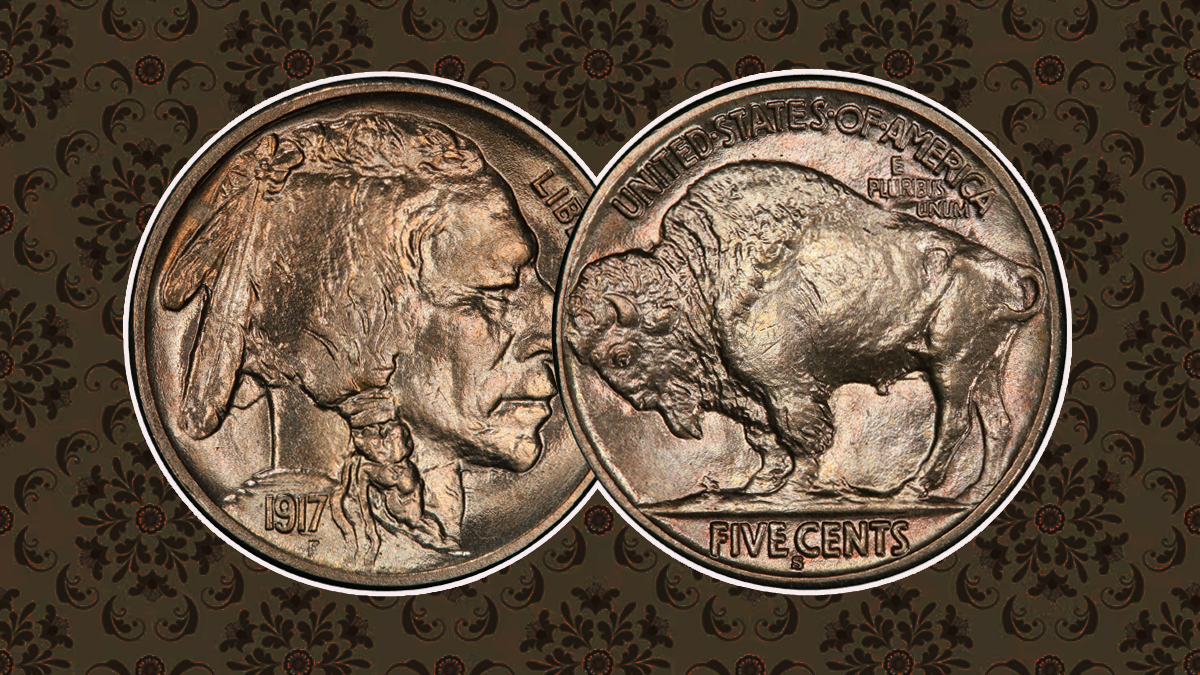
It is rare to find the 1917 S Buffalo Nickel well-struck. The 1917-S often has a frosty, attractive shine that remains intact. The United States Buffalo Nickel Five Cent is a nice and scarce coin, making it a wonderful addition to any collection. A small number of 1917-S nickels were struck from fresh dies, resulting in extremely well-struck examples. However, most Mint State survivors have an overall softness of detail, not affecting any specific part of the design.
This softness likely resulted from the dies being set at an excess distance to extend their useful life, rather than die erosion. Another possibility is that the planchets were not properly annealed and remained resistant to striking. There aren’t many circulated editions in any grade, and many of them can only be recognized by the partly entire numeral 17.
Two styles of S mintmark were used this year. While the second punch first started early in 1917 and continued to be in use as late as 1942, the first punch was designed in 1909 especially to be used with the Lincoln Cent before it was expanded to other values.
In this article, we’ll explore the 1917-S Buffalo Nickel’s history, design, rarity, condition, and value with important details.
History of 1917 S Buffalo Nickel
The Buffalo Nickel, as the Indian Head Nickel, was minted from 1913 to 1938. Designed by James Earle Fraser, it aimed to capture the spirit of the American West. The 1917-S version was produced at the San Francisco Mint. For collectors, this year is out because of the use of two distinct “S” mintmarks and the different quality of the strikes.
Coin Specification
- Category: Buffalo Five Cents (1913-1938)
- Mint: San Francisco
- Obverse Designer: James Earle Fraser
- Reverse Designer: James Earle Fraser
- Composition: Copper-Nickel
- Weight: 5g
- Diameter: 21.2mm
- Edge: Plain
Design
Obverse
The obverse side of the 1917-S Buffalo Nickel coin features a Native American profile. Fraser used three different Native American chiefs as models, creating a composite image that represents Native American heritage.
Reverse
The reverse depicts a bison standing on a mound. This design was inspired by Black Diamond, a bison living in New York’s Central Park Zoo. Also, the text “UNITED STATES OF AMERICA” and the amount “FIVE CENTS” are inscribed.
Rarity and Condition
In circulated grades, the 1917-S Buffalo Nickel is scarce; in uncirculated shape, it is very rare. This year’s coins were often lacking more information because of difficulties with planchet quality and die space. There were two separate “S” mintmarks in use: one was introduced in 1909 for the Lincoln Cent, and the other was introduced in 1917 and used until the year 1942.
Grading the 1917 S Buffalo Nickel
- Uncirculated: Sensitive details, real mint shine, and no fading.
- Extremely Fine: Good overall conservation, very little surface scratches, and small cracking.
- Fine: Moderate wear with more noticeable marks but clear imagery.
- Good: Heavy wear, major surface marks, and smoothed details.
Value of the 1917 S Buffalo Nickel
The value of a 1917-S Buffalo Nickel varies based on its condition:
- Good: $22
- Fine: $75
- Extremely Fine: $200
- Uncirculated: $375
As of June 2024, prices range from $12.50 to $675 for circulated examples. On the open market, uncirculated coins are available for up to $28,000.
Also Read – 1867 Shield Nickel: A Guide for Coin Enthusiasts
Conclusion
Collectors look the 1917 S Buffalo Nickel because of its unique design, historical significance, and varied struck conditions. Considering the qualities that influence the worth of a product and its rarity might help you appreciate it more and guide your collecting endeavors, regardless of your experience level. With its unique design and rich history, this famous coin is still a valuable addition to any collection.
